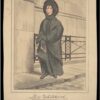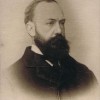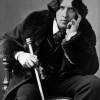
Rebecca Nesvet, “Miss Whitehead, ‘The Bank Nun’”
An urban legend maintains that early in the nineteenth century, one Miss Whitehead, colloquially known as “the Bank Nun,” frequently visited the Bank of England to accuse that institution of destroying her brother, a financial forger. This essay traces the evolution of this legend. I contend that in 1837, an obscure comic sketch reacted to that year’s major financial crisis by dredging up the Romantic-era case of financial forger Paul Whitehead and focusing on his surviving sister. Displacing her brother’s notoriety onto her, the sketch reinvents her as “the Bank Nun,” a grotesque magnet for lingering Romantic-era anxieties about the circulation of paper credit, financial forgery, and women. A succession of plagiarisms, retellings, and reappraisals of this ephemeral sketch and its portrait illustration made the Bank Nun a folk heroine of enduring resonance. Via this iconic figure, Romantic-era economic controversy haunts London today.

Mary Jean Corbett, “On Crawford v. Crawford and Dilke, 1886″
Crawford v. Crawford and Dilke was among the first Victorian divorce cases to involve a well-known English politician. It achieved scandalous status in its own time for both its lurid sexual details and its high-profile cast of characters. Focusing less on the chief male actors than its female participants, including Maye Dilke and Virginia Crawford, I consider the response by contemporary feminists to Sir Charles Dilke’s fall from power, as a consequence of his perceived transgressions, and some implications of the scandal for feminist politics in the 1880s and 1890s.

Andrew Elfenbein, “On the Trials of Oscar Wilde: Myths and Realities”
This essay contradicts myths often found in popular writing about Oscar Wilde: (1) Wilde was an aristocrat; (2) Victorians knew nothing about homosexuality; (3) Wilde was put on trial for being a homosexual; (4) once Wilde was on trial, his conviction was inevitable; and (5) after the trials, Wilde disappeared. It concludes by speculating on future directions for work on Wilde and sexuality.
